Release 20
As usual, the new version includes a number of major and minor updates and improvements. Among the major innovations in ACE 20, there is improved chatbot history management. The chatbot dialogue will now follow if the conversation is transferred to a human agent and the entire dialogue is saved in the central interaction database. We also continue to develop our web-based administration tool ACE Coach, which has new and extended functionality, including user management and control of call flows.
A more flexible work area in ACE Interact


A new “card framework” give agents more freedom in tailoring their work area to optimise for their tasks, workflows and individual needs.
- Instead of using fixed width columns, size and position can be set independently for every individual card in the browser window
- Cards may overlap, partially or fully
- Card placement is maintained on window resize. Scroll bars are added dynamically if needed
- “Snap” function helps the user to organise cards neatly in the work area
- When upgrading to ACE Interact 20 or later from earlier versions it remembers where you left off to make you feel right at home

The new work area lets the agent place cards and adjust size to get the most important information and tools in focus and in the order they are used. This way it’s possible to reduce distractions, resulting in a better and more effective work environment.
More tweaks to the work area
- A shortcut button makes it easier to log out and terminate the work shift correctly
- Improved and colour-coded status area makes it clearer what status the agent is in
- New and improved design of toggle for paused/active
- Activate forwarding without having to pause first. Saves seconds and improves statistics accuracy
Improved handover from ACE Chatbot to agent
- When ACE Chatbot hands over to the agent, the initial dialogue between customer and chat bot is included and visible to the agent in ACE Interact.
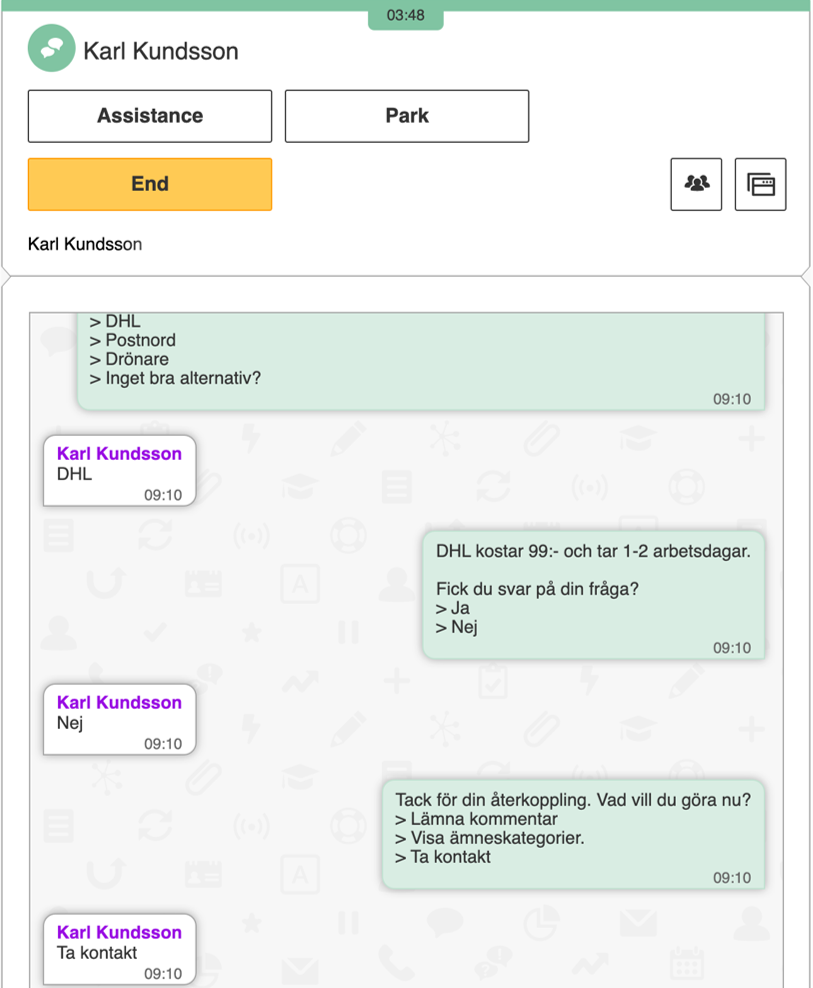
- The combined dialogue is stored in ACE Interaction View for later review.
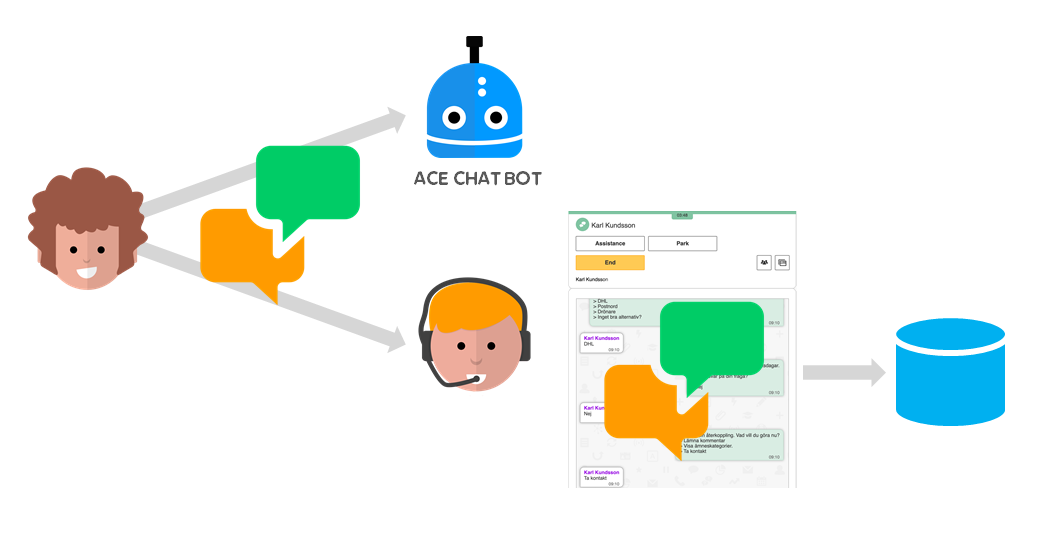
- Chat bot dialogue and live dialogue can be exported from ACE Interaction View to Interaction Analytics tool for further analysis and follow up.
Enhanced agent management and basic call flow administration in ACE Coach
ACE Coach takes another significant step towards becoming the main administration tool. Now extending user administration and incorporating functionality for call flow configuration.
- Manage agent groups and skills independently and get instant confirmation of which queues and waiting lists the agent qualifies for.

- View and edit “straight” call flows for an entrance. (Branched flows with menu choices will be added in upcoming releases).
- Manage voice prompts for welcome message, temporary message and closed message for an entrance where you have access rights.
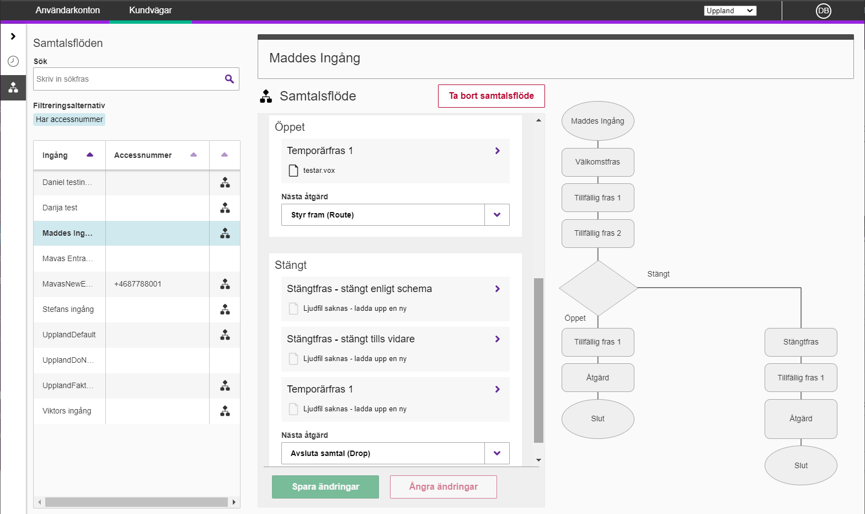
- Possibility to add a sequence of extensions, simplifies administration.
Use Microsoft Teams as a softphone
- A new connector allows organisations that run Telia TouchPoint Plus or ACE Voice for telephony to use Microsoft Teams as a softphone together with ACE Interact.

- A welcome addition when Microsoft Teams is introduced or an already established application in the digital workplace.
Enhancements in ACE Knowledge administration interface
As part of an ongoing project for workflow-handling in ACE Knowledge, this release introduces the following features:
- Personal auto-save-versions of Widgets (replaces drafts).
- Concurrency alerts when multiple editors are editing a guide at the same time.
- A setting for information owners to enable content expiration dates and email reminders.
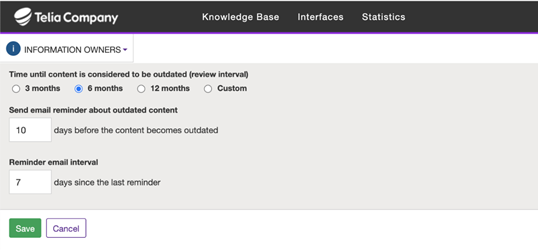
Customise work levels in detail with queue selection
It is now possible to fine tune work levels by selecting which specific queues and waiting lists to be included instead of just media types.
- When selecting a work level in ACE Interact the agent is logged in to queues defined in the worklevel that he/she has the right skill set for.
- Configure if agents should be allowed to log out of individual queues that are defined in the work level or not.
- Configure which work levels should be visible and selectable by the agent. Either work levels where the agent has skill for at least one queue or only work levels where the agent has skills for all queues.
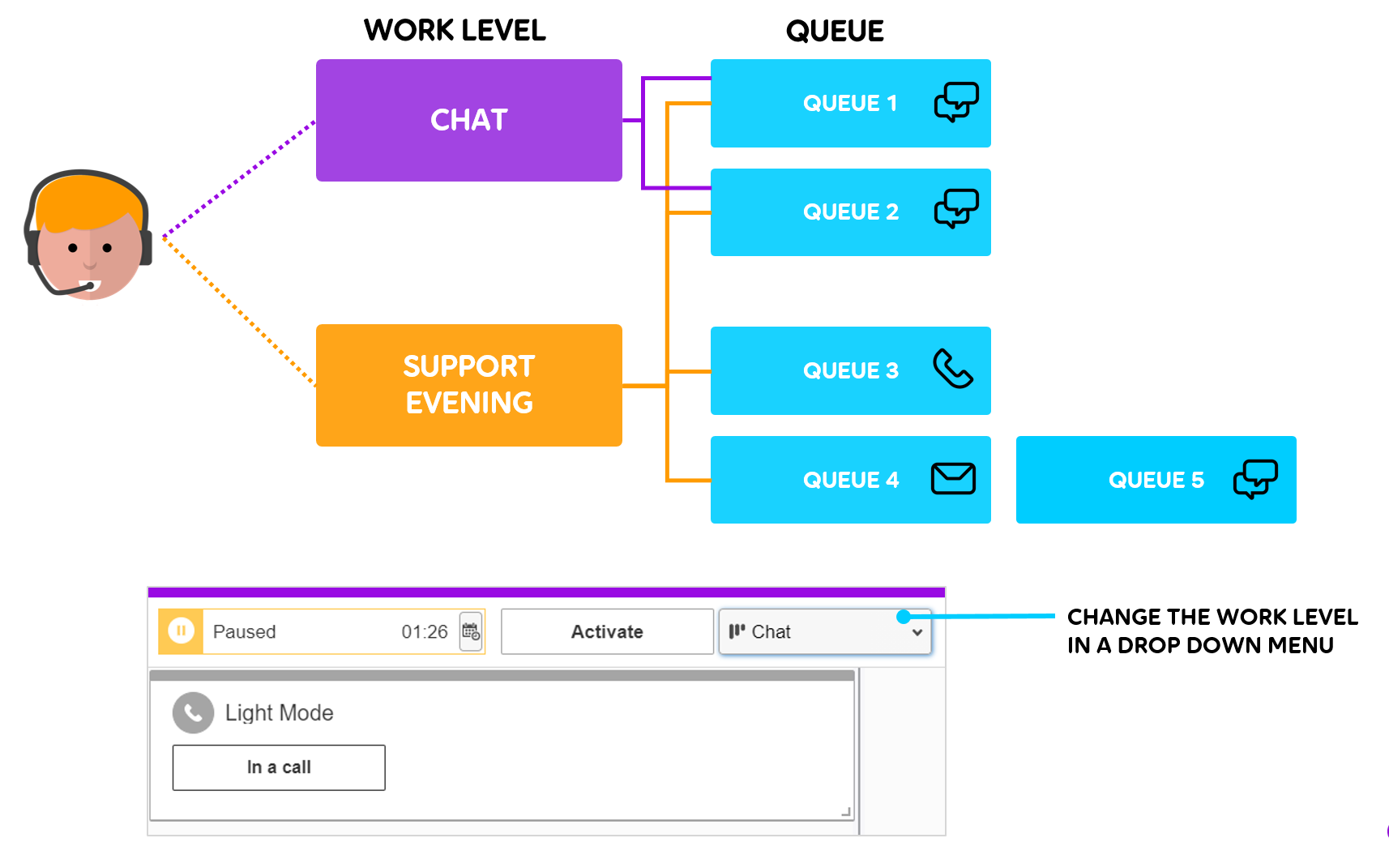
Boost.ai adapter for ACE Conversational Hub
Integrate Boost.ai bots or virtual agents into the ACE ecosystem.
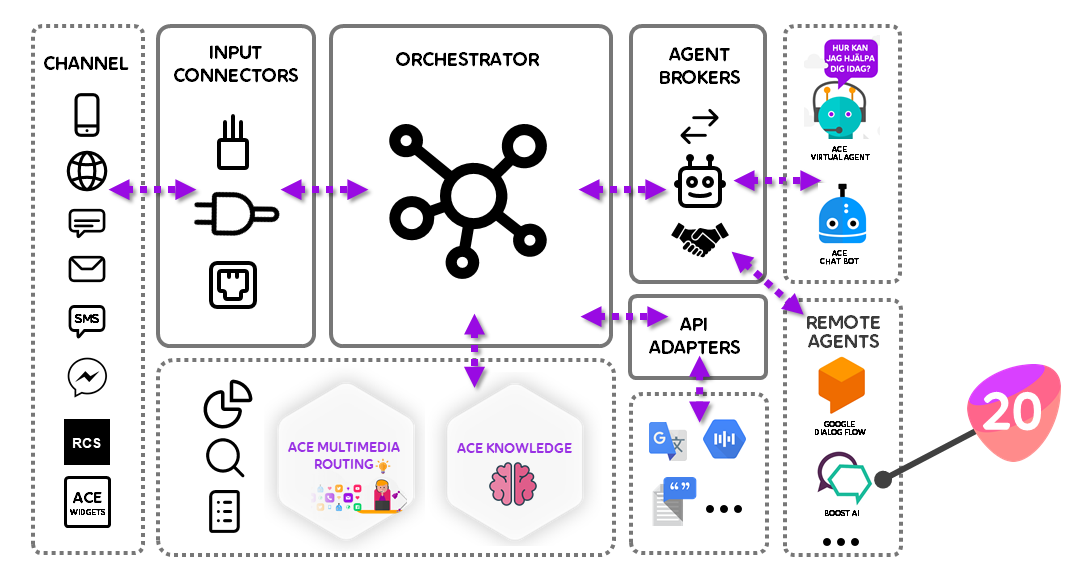
Define minimum call length in ACE Survey
- There is now an option to automatically prevent very short calls from triggering a survey.
- The new threshold time parameter surveyMinTalkTimeForSurvey is configurable in ACE Admin.
New features in ACE Admin
- Support for listing queues, agents, skills and task types in the subareas window.
- Improved disposition of user account information by hiding inapplicable or irrelevant columns.
Chat bot history available in ACE Conversational API
This enables integrations for passing historical conversations in arbitrary chat or chatbot app to agents.
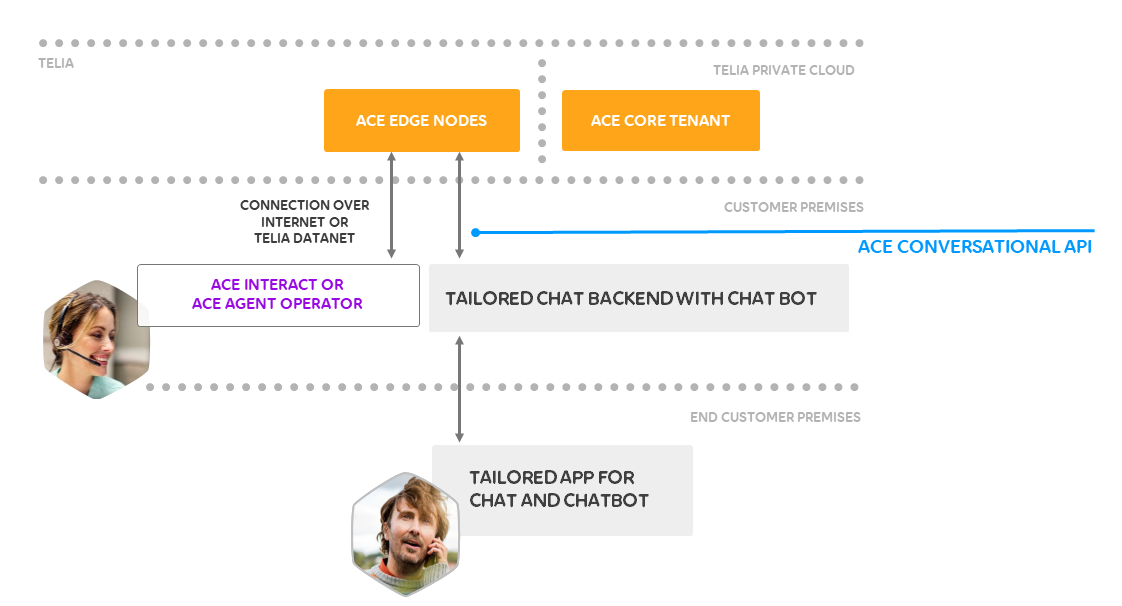
Version requirements for the individual clients
To use the new functionality in Telia ACE 20.0 you need latest version of each respective sub product.
The following versions of ACE clients are compatible with ACE 20.0:
- Older versions of ACE Admin are not supported. ACE 20 thus requires Admin 20.
- Older versions of ACE Coach are not supported. ACE 20 thus requires Coach 20.
- CallGuide Agent / ACE Agent from version 9.0.0
- CallGuide Pulse / ACE Pulse from version 9.0.0
- CallGuide Report / ACE Report from version 11.0.0
- CallGuide Edge Agent / ACE Interact from version 12.0.0
- CallGuide Edge Pulse / ACE Monitor from version 12.0.0
Functionality and limitations in Telia ACE open interfaces is described in Release Notes Open Interfaces and the Interface specification document for each interface.
Dependencies and version support is described in:
- Overall release notes for Telia ACE 20.0.
- Release notes for the various sub products.
- Site Environment Requirements documents.
